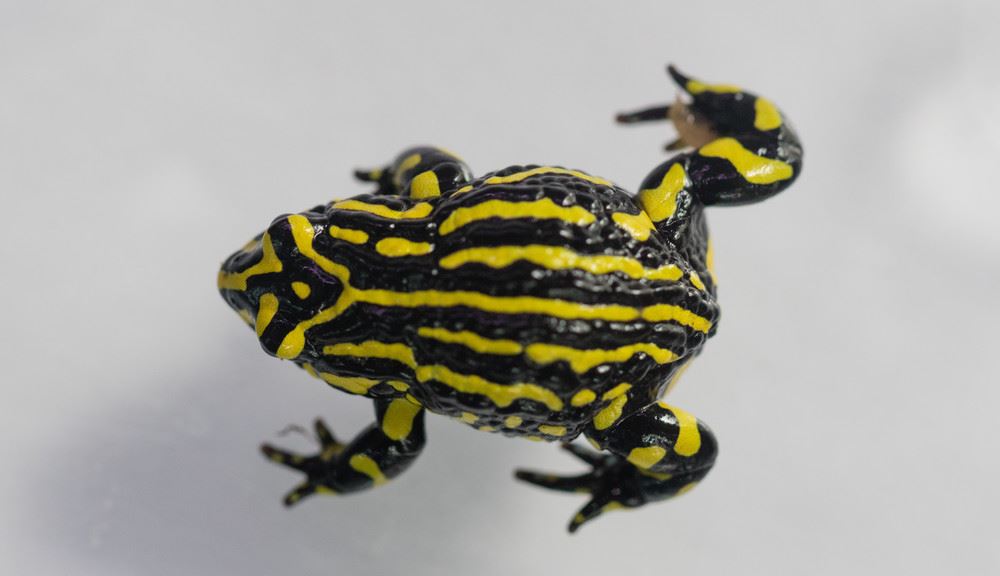The Corroboree frog, also known as the Southern and Northern Corroboree frog, is a small and critically endangered species of frog native to the alpine regions of southeastern Australia.

It belongs to the family Myobatrachidae and is scientifically classified under the genus Pseudophryne.
Here are some key characteristics and facts about the Corroboree frog:
- Appearance: Corroboree frogs are strikingly colored with bright, contrasting yellow and black or yellow and white markings on their skin. This distinctive coloration serves as a warning to predators, indicating their toxic nature.
- Size: They are small-sized frogs, with adult males measuring around 2.5 to 3 centimeters (1 to 1.2 inches) in length, while females are slightly larger, reaching up to 4 centimeters (1.6 inches).
- Habitat: These frogs inhabit the sub-alpine and alpine regions of southeastern Australia, specifically in Kosciuszko National Park and Namadgi National Park. They are adapted to living in sphagnum bogs, seepages, and moist alpine meadows.
- Reproduction: Corroboree frogs have a unique breeding behavior. Males construct small nests under moss, rocks, or logs near water bodies. After mating, the females lay small clusters of eggs, usually around 20 to 40, in the water. The tadpoles then develop in the water until they metamorphose into froglets.
- Conservation status: The Corroboree frog is one of the most endangered amphibians in Australia. Both the Southern and Northern Corroboree frog species are listed as critically endangered by the International Union for Conservation of Nature (IUCN). The main threats to their survival include habitat loss, climate change, disease (chytridiomycosis), and predation by feral animals.
- Conservation efforts: Various conservation programs and initiatives have been implemented to protect and restore the Corroboree frog populations. These include captive breeding programs, habitat restoration, disease management, and predator control measures.
It’s worth noting that information about the Corroboree frog may evolve over time as new research and conservation efforts continue. Therefore, it’s advisable to refer to the latest sources and conservation organizations for the most up-to-date and accurate information.